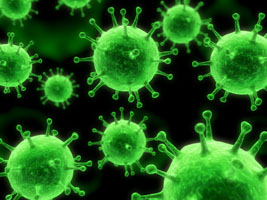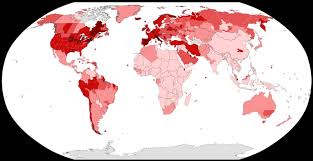An exciting, but incomplete list.
Please check back soon as we update the page!
Plenary Speakers:
Rashid Bashir Electrical and Computer Engineering, University of Illinois Urbana-Champaign Point of Care Sensors for Detection of Disease Biomarkers
Yana Bromberg Biochemistry and Microbiology, Rutgers University Teaching an old dog new tricks: ideas for preventing pandemics using existing techniques
Gerardo Chowell Population Health Sciences, Georgia State University
Utkan Demirci Radiology, Stanford University School of Medicine
James Holland Jones Earth System Science, Stanford University Heterogeneity and Social Structure Matter for Pandemic Control (and Cultural Evolution Can Help Us Make Sense of Them)
Eric Lofgren Paul G. Allen School for Global Animal Health, Washington State University Nosocomial Amplification of Pandemics: Understanding Healthcare System Fragility
Martina Morris Sociology and Statistics, University of Washington
Alex Olshevsky Systems Engineering, Boston University Efficient Stabilization of Pandemics
Sadie Ryan Emerging Pathogens Institute, University of Florida Shifting Risks: global change and vector borne disease suitability models
Themis Sapsis Mechanical Engineering, MIT Designing predictors for extreme outbreaks in complex systems
Venu Veeravalli Electrical & Computer Engineering and Coordinated Science Lab, University of Illinois Urbana-Champaign Quickest Change Detection for Predicting and Monitoring Pandemics
Invited Discussants:
Ery Arias-Castro Mathematics and Data Sciences, University of California, San Diego
Tamer Başar Electrical and Computer Engineering, University of Illinois Urbana-Champaign
Michel Boufadel Civil & Environmental Engineering, NJIT
Carter Butts Sociology, Statistics, Computer Science, and EECS, University of California, Irvine
Misha Chertkov Applied Mathematics, University of Arizona
Alin Coman Psychology and Public Affairs, Princeton University
Siddhartha Dalal Statistics, Columbia University
Mario di Bernardo Automatic Control, University of Naples Federico II
Andrea Egizi Monmouth County Tick-Borne Disease Laboratory
Stephen Eubank BioComplexity Institute, University of Virginia
David Finnoff College of Business, University of Wyoming
Marti Head Joint Institute for Biological Sciences, Oak Ridge National Laboratory
Yannis Kevrekidis Chemical and Biomolecular Engineering, Johns Hopkins University
Henry Lam Industrial Engineering & Operations Research, Columbia University
Chris Moore Santa Fe Institute
Jose Moura Electrical and Computer Science Engineering, Carnegie Mellon University
Mona Papeş Spatial Analysis Lab & Ecology and Evolutionary Biology, University of Tennessee, Knoxville
Shai Pilosof Life Sciences, Ben-Gurion University of the Negev
Radha Poovedran Electrical & Computer Engineering, University of Washington, Seattle
Saswati Sarkar Electrical and Systems Engineering, University of Pennsylvania
Kavita Ramanan Applied Mathematics, Brown University
Daniel Segre Biology & Biological Engineering & Physics, Boston University
Saray Shai Computer Science, Wesleyan University
Chris Stone Illinois Natural History Survey
May Wang Biomedical Engineering, Georgia Tech
Shelby Wilson Computer Science, JHU Applied Physics Laboratory
Pre-Recorded Plenary Talk Abstracts:
Point of Care Sensors for Detection of Disease Biomarkers, Rashid Bashir
In this talk, we will present our work on developing microfluidic devices and sensors for detection of disease biomarkers. Using SARS CoV-2 as an example, we will discuss the different types of tests available today and where the gaps and opportunities exists. Learnings from our work on stratification of sepsis using electronic medical records and machine learning algorithms will be presented, also motivating the need for point of care sensors for the detection of biomarkers of disease. Challenges across cost of testing, scale of testing, and sensitivity/specificity will be discussed.
Teaching an old dog new tricks: ideas for preventing pandemics using existing techniques, Yana Bromberg
Existing computational methods for the evaluation of molecular functions of microbial communities are particularly useful in differentiating specific characteristics of environmental niches. "Old school" alignment-based methods are precise in identifying the functionality encoded by microbiome metagenomes, but novel deep learning-based algorithms contribute to a broader, previously unavailable, understanding of molecular functionality. It thus appears likely that the latter approaches may also help uncover nucleotide signatures of human viral and bacterial pathogens in microbiome data. Furthermore, an in-depth evaluation of the identified sequences using variant effect annotation methods may be helpful in identifying the specific genes/regions responsible for pathogenicity prediction.
Heterogeneity and Social Structure Matter for Pandemic Control (and Cultural Evolution Can Help Us Make Sense of Them), James Holland Jones
Every transmission event of an infectious disease has a social cause. Susceptible individuals need to be brought into contact with infectious individuals in a manner consistent with the mode of transmission for a given pathogen. The centrality of this social interaction to disease transmission is actually embedded in the foundational formalisms of mathematical epidemiology. In particular, the mass-action term that underlies the SIR family of transmission-dynamics models encodes some quite specific assumptions about social interaction. Naturally, these models can be extended to account for arbitrarily complex forms of social structure and the interactions that such structure induces. Despite the centrality of social interaction to the transmission dynamics of infectious disease, there is a shocking dearth of research integrating social process into the formal systems we use to understand the dynamics and control of infectious disease. I will discuss behavioral and social heterogeneity and social structure and their consequences for the transmission dynamics of infectious disease. Particularly in the absence of an effective vaccine, much of epidemic control involves changing the behavior of individuals and populations to reduce the likelihood of transmission. This means that successful epidemic control, like so many other big problems facing society, depends critically upon behavior change. I suggest that we have a rigorous but neglected science of behavior and culture change in the study of cultural evolution. I provide some examples where cultural evolution models provide important insights into the behavior of populations. First is the prediction that uncertainty should activate specific learning heuristics such as conformist bias. I use this observation to help explain why otherwise rational people who agree with the principles of infection control nonetheless engage in collective behaviors that work against the general social good of eradicating the pandemic. In a highly structured population, conformist biased learning can lead to large segments of the population resisting public health control measures. Heterogeneity in the willingness to adopt protective behavior can lead to bistability in equilibrium behavior suggesting that even when the population structure is favorable for broad adoption of protective behavior, low-adoption equilibria are a possibility. Formal models of the coupled transmission dynamics of pathogen and culturally-learned protective behaviors show surprisingly complex dynamics with some broad similarities to the epidemic situation in the US under COVID-19. Finally, while some have suggested that population heterogeneity might make the herd-immunity threshold for COVID-19 substantially smaller than the 65-75% indicated by the well-mixed model, this seems unlikely given the reality of the structure of heterogeneity. The clear structuring of the US population into highly homophilous subpopulations who are either sympathetic or antagonistic toward epidemic-control efforts suggests that, if anything, the herd-immunity threshold may be higher, on the order of 80-90%, and that the apparent tendency for the force of infection to fall after populations reach 20% prevalence may instead be due to the intrinsic (complex) dynamics of an infection with a strong social component. Overall, the opportunities for addressing important scientific and applied questions by bringing together social scientists and epidemiologists are strong. There remain fundamental questions of substantial applied interest at the intersection of social behavior and transmission dynamics.
Nosocomial Amplification of Pandemics: Understanding Healthcare System Fragility, Eric Lofgren
Emerging epidemics have the potential to both place a considerable burden on healthcare systems and are often accelerated by them, with failures in infection control resulting in a rapid increase in cases. The West African Ebola epidemic, as well as all three coronavirus epidemics (SARS, MERS and COVID-19) have followed this pattern, putting both patient and medical worker lives at risk and potentially crippling the capacity of the system as it is needed most. This talk explores some factors that may impact the robustness of a healthcare system to pandemic-driven surges and highlights parallels to other problems in hospital epidemiology. Importantly, we highlight some measures that can be instituted prior to, or at the very beginning of, an epidemic, anticipating the arrival of new cases and their attendant infection control challenges, rather than relying on reactive measures.
Efficient Stabilization of Pandemics, Alex Olshevsky
We consider the problem of stabilizing pandemic spread over a network. The methods we propose could be applied to pandemics among animal species to decrease the probability of making an eventual transmission to human hosts. Current methods for pandemic stabilization are expensive, often relying on large-scale animal slaughter. We consider how to stabilize a pandemic economically by either removing a limited number of hosts from the population or by restricting interactions. Our main finding is that many natural heuristics for this problem often do the very opposite of the optimal method.
Shifting Risks: global change and vector borne disease suitability models, Sadie Ryan
In this talk, I will highlight work from a decade of collaborations on ecophysiological models of thermal responses of mosquito borne diseases, and species distribution model approaches to understanding mosquito and tick-borne diseases, and their responses to modeled climate change on landscape. I offer this as case studies of tools in the toolbox of predicting emergence, and a platform to think about communicating these environmentally informed mapped model outcomes as ‘risk’ which speaks to decision making for prevention and intervention.
Designing predictors for extreme outbreaks in complex systems, Themis Sapsis
The recent healthcare crisis due to COVID has demonstrated the need for prediction and understanding of extreme outbreaks in complex, highly-interconnected systems. This is a relevant problem for a wide range of areas in science and engineering, all having as common dominator high-dimensionality and strong nonlinear interactions. A special challenge related to extreme events is the fact that the variables or degrees of freedom which are used as observables of an extreme event (e.g. number of hospitalizations) are not the same with the variables that constitute the "background" dynamics responsible for the eventual outbreaks (e.g. number of asymptomatic individuals). This is a common features for a plethora of complex systems such as extreme events in fluid flows, nonlinear waves, structural systems and others. I will discuss some recent ideas for the development of output-weighted Bayesian optimization tools that are specifically designed to identify the variables and associated mechanisms of the background high-dimensional dynamics, which are responsible for extreme outbreaks.
Quickest Change Detection for Predicting and Monitoring Pandemics, Venu Veeravalli
The problem of efficiently detecting changes in stochastic systems and time series, often referred to as the quickest change detection (QCD) problem, arises in various branches of science and engineering. It is assumed that the observations of the system undergo a change in distribution in response to a change or disruption in the environment. The observations are obtained sequentially, and if the state changes from the normal state, then it is of interest to detect this change as soon as possible, subject to false alarm constraints, and take any necessary action in response to the change. We will present some recent results that show that the QCD approach can be used to detect the onset of a new wave of a pandemic using test positivity rate data from individual counties.
There is evidence that the emergence of a pandemic can be related to subtle (stochastic) changes in the environment, e.g., changes in pathogens, ecological interactions and human behavioral decisions. Can such changes be efficiently detected using the QCD approach so that the emergence of a pandemic threat can be predicted in a timely manner?


